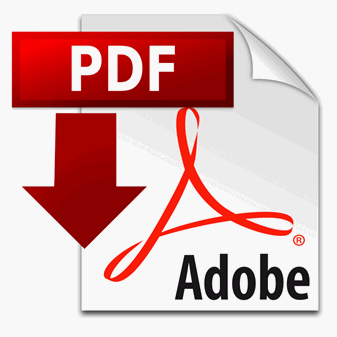Adhering to certain rules of grammar and mechanics helps us keep our writing clear and consistent. This section will lay out our house style, which applies to all of our content unless otherwise noted in this guide.
Basics
Write for all readers. Some will paddle (skim read), those who will swim (read the page), and those who will dive (read everything and look for more information). Content should be able to satisfy all three, by being clear, informative and providing additional links to find out more. Use descriptive headers and subheaders to clearly group information together in an orderly way.
Keep to the point. Lead with the most important information, and only include what is relevant. Additional, nice-to-know information can be linked to or referenced lower down, but should not be in amongst the genuinely relevant information.
Be concise. Use short words and layman’s terms whenever possible. Sentences should not be a paragraph long — try to keep them to a couple of lines at most.
Be specific. Use clear, unambiguous language.
Be consistent. Stick to the agreed-upon styles for specific channels, and follow the points in this guide.
Abbreviations and acronyms
If there is a chance a reader will not understand an abbreviation or acronym, write the full name with the acronym in parentheses the first time you use it:
- World Health Organization (WHO)
Capitalisation
As a general rule, capital letters should only be used at the beginning of a sentence and for proper nouns and proper adjectives. Please see the word list for exceptions.
Our website and email CSS automatically display headings (H1s) and subheadings (H2s) in all caps. When you are adding these headings, please write them in sentence case (ie only the first letter of the first word and of proper nouns capitalised).
This is especially important when adding H2s to webpages, as they may appear in the in-page navigation, and should be displayed there in sentence case.
Contractions
Feel free to use contractions — they give writing an informal and friendly tone.
Emojis
Emojis can be a fun way to brighten up your writing, but they should be used infrequently and only when they really work with the content.
Numbers
Numbers up to and including ten should be written out, with all numbers above displayed as numerals. Ordinals should generally be written with numerals, with the exception of first to fifth.
All dates should be written with numerals.
Numbers longer than three digits should use thousand separators:
- CZ/DE/IT/NL — use full stops: 1.000.000
- FR — use spaces: 1 000 000
- UK/US — use commas: 1,000,000
Numbers should be written in full, unless there are space restraints, eg a Tweet, when abbreviations can be used eg 1k.
Dates
All dates indicating the day (eg 14th) should be written with numerals:
- 14th March
Days of the week and months should be written out in full eg ‘Saturday’ and ‘January’, rather than ‘Sat’ and ‘Jan’. Please refer to the table for specific date formats for each country.
Decimals and fractions
Write out fractions eg ‘Three quarters of farm animals…’ rather than ‘¾ of farm animals’. Anything using a decimal should be written using numerals eg ‘2.5’ or ‘2,5’ depending on the language in which you write.
Percentages
The percentage symbol (%) should be used when the numbers are written as numerals. Otherwise, where the number is spelled out, the word ‘percent’ should be used:
- 25%
- Two per cent
Ranges and spans
Use a hyphen (-) without spaces to indicate a range or span of numbers:
- Lines are open 9am-5pm
Money
Please refer to the table below to see how sums of money should be written and where the currency symbol should be placed, depending on the country you are writing for. Always use the same format for the language in which you write, regardless of the currency you are writing about. For example, if you are writing for a US audience, and would normally write $1.11, should you then wish to write about Euros in France, you should still write in the American format €1.11, even though in France this would be written as 1,11€.
Telephone numbers
As we are an international charity, it is important to add the country code at the beginning of all phone numbers to make it clear which country will be called. The country code should be followed by the first number in brackets.
In addition, follow the country specific formatting laid out below:
- ES: +XX (0)111 222 333
- EU (Brussels): +XX (0)1 222 3333
- FR: +XX (0)1 22 33 44 55
- IT: +XX (0)11 2222222
- NL: +XX (0)11-2222222
- PL: +XX (0)11 222 33 44
- UK: +XX (0)1111 222 333
- US: +XX (0)11-222-3333
Temperature
Temperatures should be written using the degree symbol and a capital ‘C’ for ‘Centigrade’ (except in the US, where a capital ‘F’ should be used for Fahrenheit). The numbers should be written in numerals:
- 20°C / 68°F
Time
There are different ways to format times, depending on which office you are writing for:
- FR: Use 24 hour clock, and h after the hour and before the minutes. Do not add minutes for on the hour times — 9h30 or 17h.
- UK: use 12 hour clock with ‘am’ or ‘pm’ and full stop to separate minutes from hours. Do not add minutes for on the hour times — 11.30am or 4pm.
- NL: Use 24 hour clock, full stop for separator and always add minutes — 9.00 14.25.
Specify time zones when writing about events, and feel free to use the UTC offset to be more specific:
- 13.30 CET (UTC+1)
Punctuation
Apostrophes
To make a word possessive, use 's if the word is singular, even if it ends with an ‘s’ already, or just an apostrophe if the word ends with an ‘s’ and is plural:
- James’s
- Two pigs’ food
Apostrophes can also be used to denote letters dropped from a word in informal writing. With the exception of the most common contractions — eg don’t/ you’re,/ it’s — use these sparingly and only when appropriate.
Colons
Use a colon to precede a list. Do not use a colon to join phrases, use em dashes.
Commas
At Compassion, we do not use the serial (Oxford) comma, unless it is necessary to avoid ambiguation:
- Find out more about buying higher welfare meat, dairy and eggs. — not necessary.
- David admires his parents, Oprah, and Justin Timberlake. — necessary.
Otherwise, try not to over- or underuse commas. If you’re unsure, read the sentence out loud. Where you find yourself taking a breath, use a comma.
Dashes and hyphens
Use a hyphen without spaces on either side to link words into a single phrase or a span or a range:
- Cage-free eggs
- 9am-5pm
Use an em dash (—) with spaces on either side to offset an aside:
- Marks & Spencers — one of our Good Chicken Award winners — has signed up to the European Better Chicken Commitment.
Use proper em dashes (—), not hyphens (- or --).
Ellipses
Ellipses can be used in a couple of different ways. Use them sparingly. They can occasionally be used for emphasis or drama, but only where in keeping with the tone of the piece. They can also be used to show words have been omitted from a quote.
Full stops/periods, exclamation marks and question marks
Unless in the middle of the quote, or the entire paragraph is a quote, full stops, exclamation marks and question marks should sit outside of quotation marks:
- The minister said he “will put an end to this suffering”.
The same applies to parentheses:
- The minister indicated her support for a ban on cages (if it came to a vote).
- The minister had indicated she would support a ban on cages. (The vote did not take place.)
Do not overuse exclamation marks. Use them to make a point. Do not use more than one of them. Never use them in failure messages/alerts/sincere apologies. If you aren’t sure, don’t use one.
Leave a single space between sentences.
Quotation marks
Use double quotation marks for actual quotes:
- The minister said “we have a great track record on animal welfare, and will continue to push for the highest standards”.
If there is a quote within a quote, use single quotation marks inside the double:
- The minister said “as the Prime Minister said earlier today, ‘we have a great track record on animal welfare’”.
When quoting someone, use the past tense:
- "We will introduce a ban on cages" the minister said.
For all other instances, such as referring to specific words, letters or, where appropriate, titles of books or articles, use single quotation marks.
Semicolons
Semicolons can be difficult to regulate, so, where possible, it is best to avoid their use. If it is to offset a clause, use an em dash (—) instead. They can be used as separators in lists with complex items, although more often than not, in such a situation a bullet point list would probably work better.
Ampersands
Ampersands can be used in more informal content — social media, more upbeat email newsletters. When necessary, they can be used where there are space constraints, such as image captions or, occasionally, titles.
They should be used when it is part of a company name (and the company writes it in such a way):
- Ben & Jerry’s.
People, places and things
File extensions
When referring generally to a file extension type, use all uppercase without a full stop. Add a lowercase ‘s’ to make plural:
- JPGs
If you need to refer to a specific file and include the extension, then it should all be lowercase:
- foodguide.pdf
Pronouns
If your subject’s gender is unknown or irrelevant, use ‘they’, ‘them’ and ‘their’ as a singular pronoun. Use ‘she/her/her’ and ‘he/him/his’ pronouns as appropriate. Don’t use ‘one’ as a pronoun. For more information, see writing about people.
Names and titles
The first time you mention a person in some content, use their first name and last name. After that, discretion should be used.
Where we are talking about a supporter, it might be best to ask the supporter how they wish to be called. Where they have not requested to be referred to as Ms X or Mr X, then refer to them by their first name.
For business people, having initially given their full name, refer to them as Ms X or Mr X. The same generally applies to politicians too. However, where a politician is particularly famous (a president or prime minister for example), there can be times where simply using their last name is appropriate or more impactful, particularly in titles of articles or email subject lines.
Capitalise the names of departments and teams:
- Supporter Engagement Team
Capitalise the name of specific job titles, but not in more general reference to roles:
- You can speak to one of our Supporter Engagement Officers if you need more assistance.
- The officers were very busy.
- The Minister for Agriculture is yet to reply.
- We had spoken to the minister, but she is yet to reply.
Place names
Spell out place names in full. If there is a common abbreviation, this can be used in all subsequent instances:
- European Union, EU
URLs and websites
Capitalise the names of websites and publications, but do not italicise. If the website or publication itself writes its name completely in lowercase, then it may be sensible to either italicise the name, or put it in single quotation marks for clarity.
Writing about Compassion
Our charity’s legal names are:
- CN/CZ/ES/SE/UK/US: Compassion in World Farming International
- Brussels Office: Compassion in World Farming EU
- France: CIWF France
- Italy: Compassion in World Farming Italia Onlus
- Netherlands: Compassion in World Farming Nederland
- Poland: Compassion in World Farming Polska
Different offices refer to the charity in different ways. It is fine to abbreviate to either ‘Compassion’ or ‘CIWF’ — ‘Compassion’ should have a capital ‘c’ and ‘CIWF’ should be in all caps.
Refer to Compassion as ‘we’ and ‘us’ not ‘it’.
Where our campaigns or materials have official names, capitalise:
- End the Cage Age
- Good Farm Animal Welfare Awards
- Compassionate Food Guide
Don’t capitalise descriptive nouns, like ‘campaign’:
- Our End the Cage Age campaign
Writing about other companies and institutions
Respect other companies’ and institutions’ naming conventions. Please check on their websites to see how they refer to themselves:
- iPad
- YouTube
- Yahoo!
The first time you refer to an institution or university, give its full name. After that, you can use an abbreviation or acronym either if the name is very long, or if it is commonly shortened:
- European Court of Justice, ECJ
- University College London, UCL
Refer to an institution or company as ‘it’ (not ‘they’).
Slang and jargon
Write in plain English. If you need to use a technical term, give a short and clear definition:
- Most hens will have their beaks trimmed — a painful procedure which removes the tip of the beak with an infrared light — as this is cheaper than dealing with the underlying welfare issues.
Text formatting
Titles of publications
Use italics to indicate the title of a publication:
- Farmageddon: The True Cost of Cheap Meat
Emphasis
When you wish to emphasise something, make it bold. Do not underline things.
Of course we feel that everything we are saying is important and needs to be drawn to the reader’s eye. However, drawing too much attention to too many things loses the purpose, and can hurt the eye. Pick out a couple of really relevant things to highlight — the more interesting the phrase, the better.
Do not apply text highlighting unless there is something really urgent to say. If you must use it, ration yourself to a couple of uses a year. If bold text is used correctly, it will be sufficient.
Do not combine bold text with italics.
Alignment
With the exception of image captions, all text should be left-aligned. Do not right align or justify text — it is harder to follow the copy, and can make reading painful for those with poor eyesight or sensitive eyes.
Leave one space between sentences.


